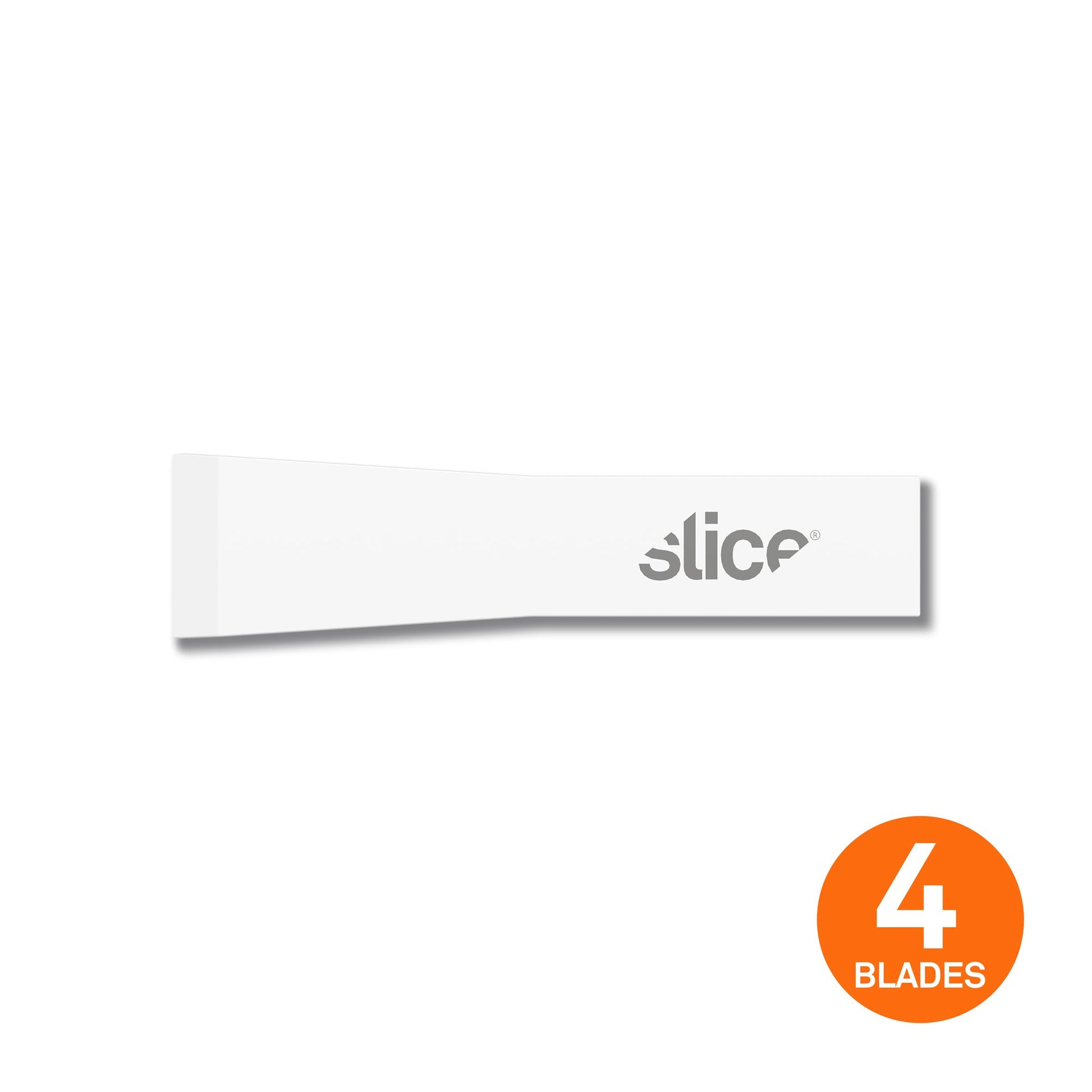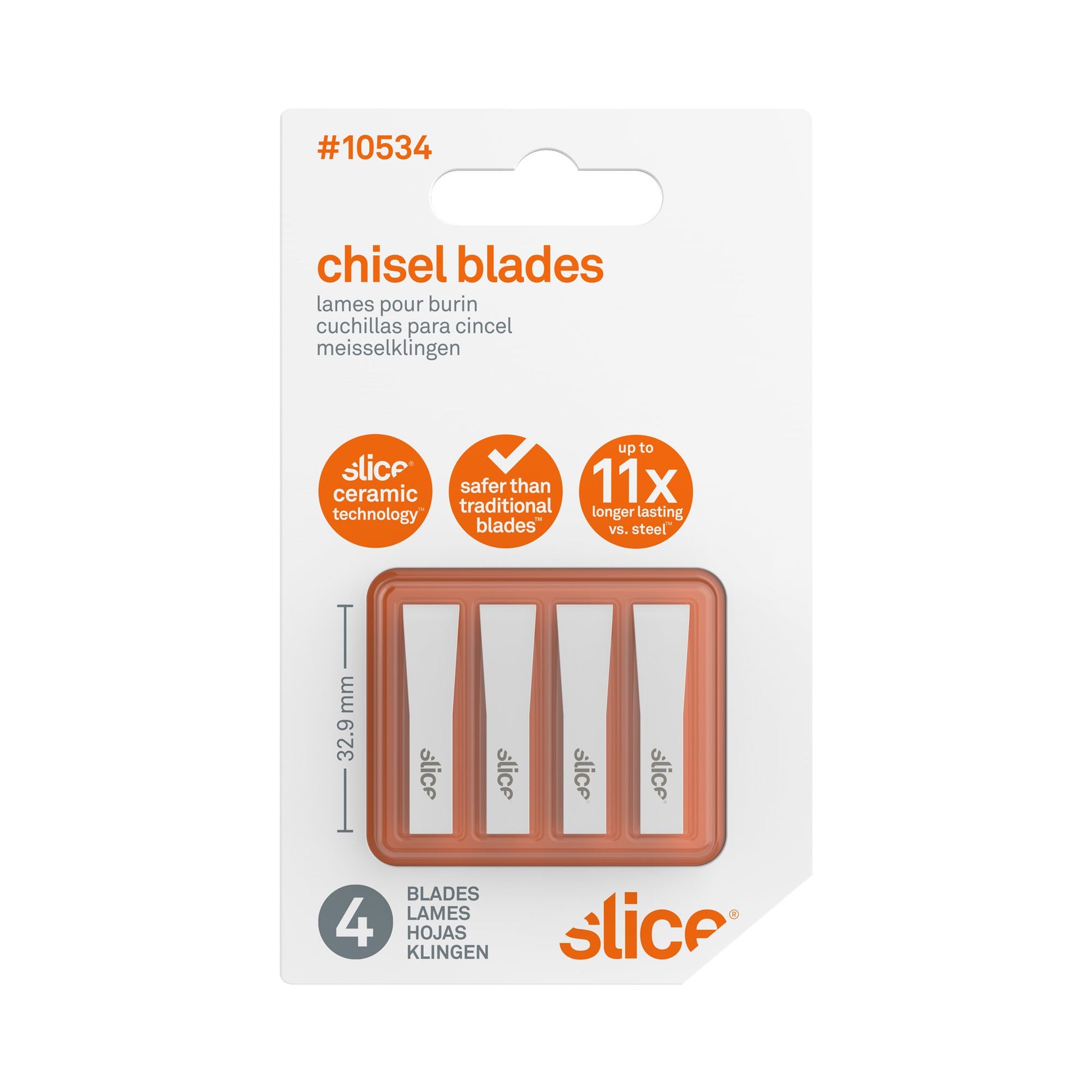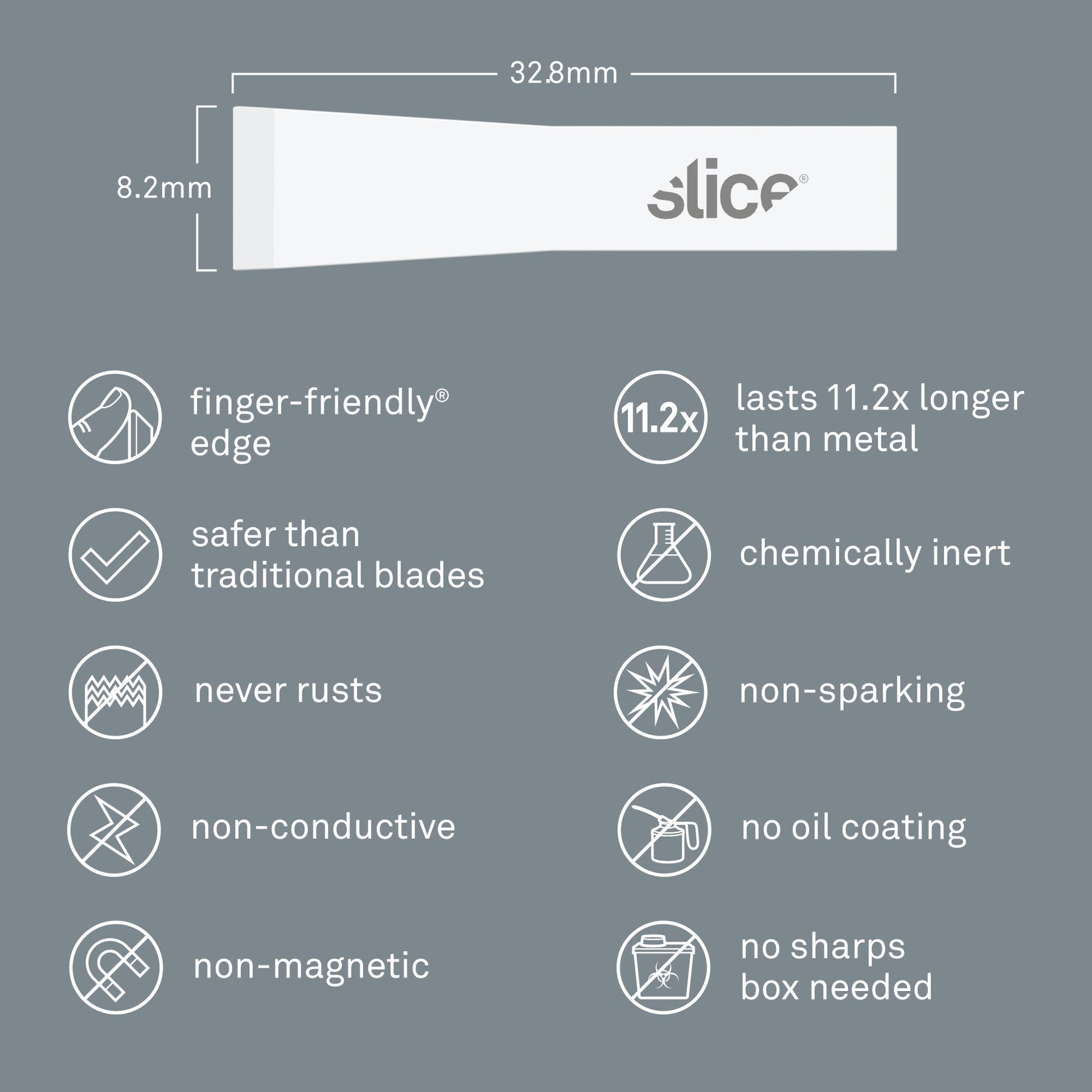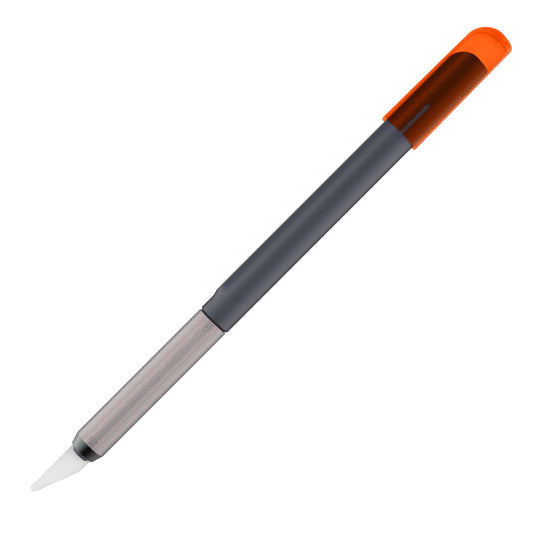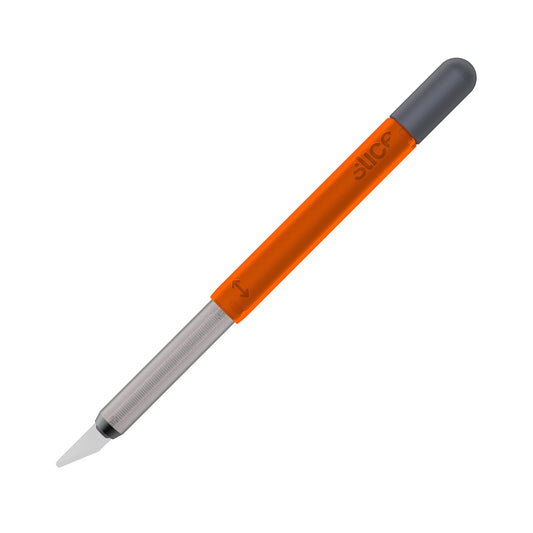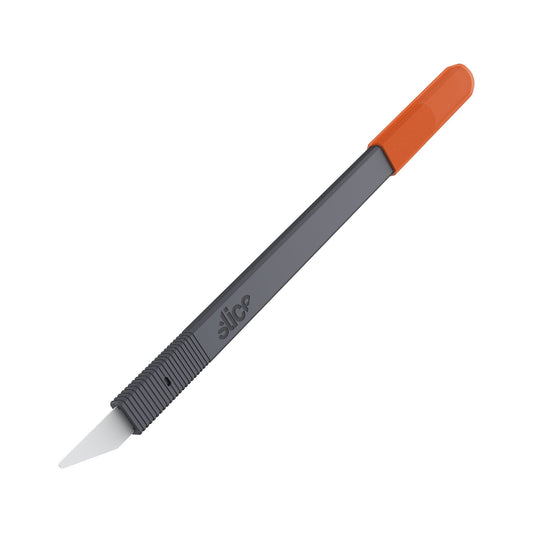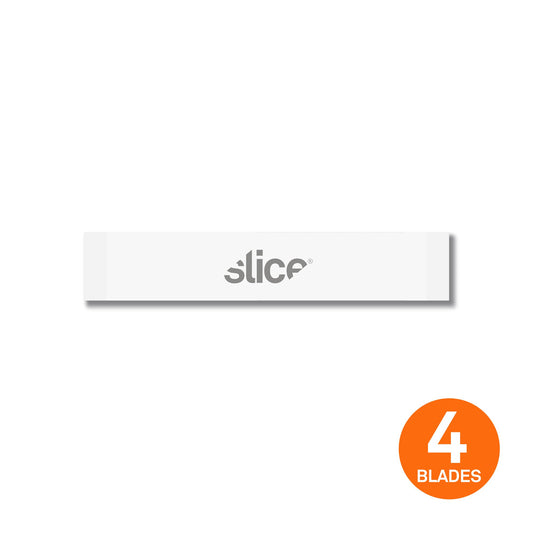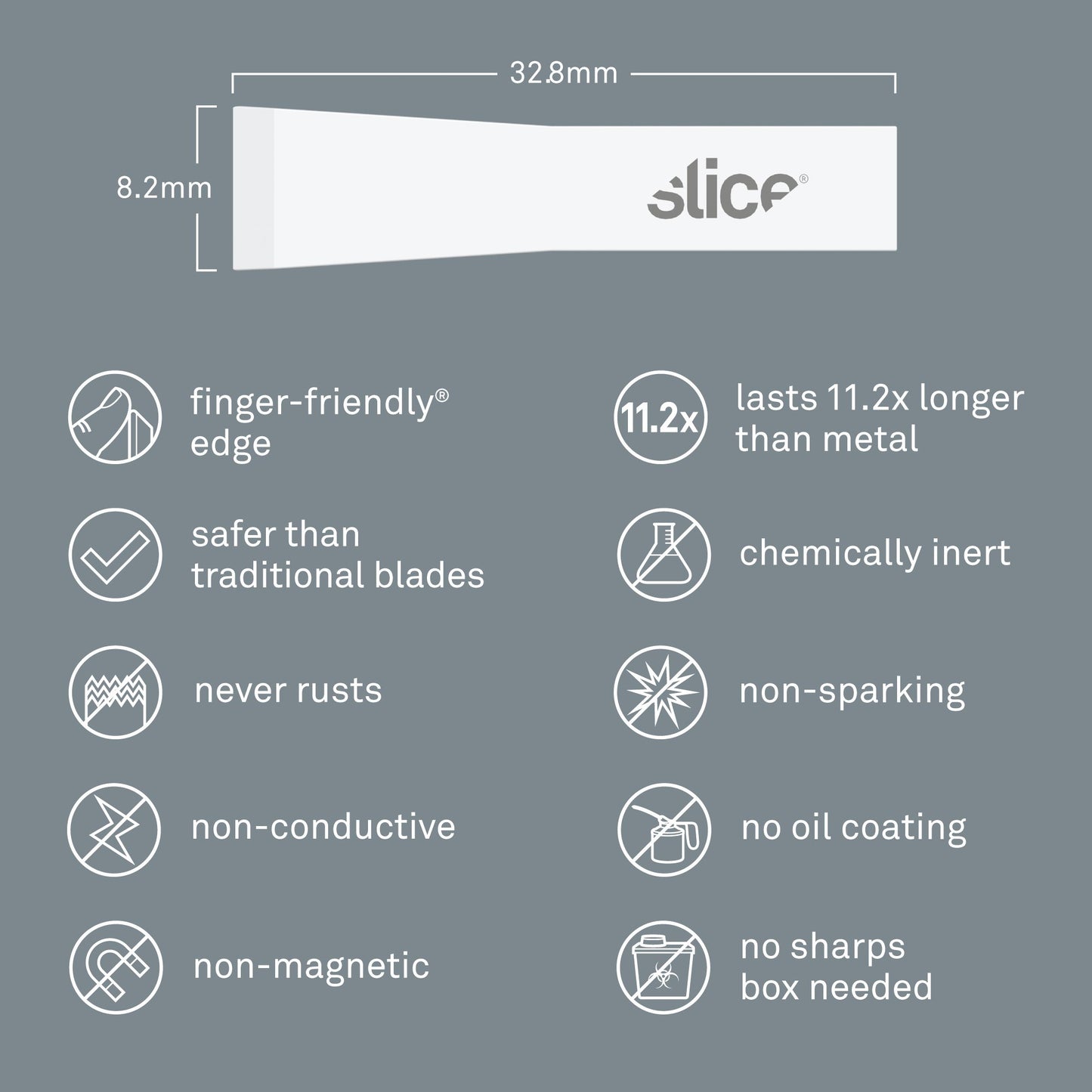Ostrza do dłuta
SKU #10534
Ostrza do dłuta Slice® 10534 wykonane są z charakteryzującego się dużą wytrzymałością dwutlenku cyrkonu, posiadają bezpieczną w dotyku krawędź finger-friendly® oraz zapewniają stabilność i dokładność podczas pracy. Idealnie sprawdzą się do wszelkich prac precyzyjnych oraz są kompatybilne z większością rękojeści modelarskich i skalpelami Slice. Ostrza są chemicznie obojętne, mogą być poddawane procesowi sterylizacji oraz nie przewodzą prądu elektrycznego, przez co stanowią świetny wybór dla producentów elektroniki oraz pracowników laboratorium. Tak jak w przypadku wszystkich produktów ceramicznych Slice, są bezpieczne w dotyku oraz wyróżniają się do 11 razy dłuższą żywotnością niż ostrza metalowe.
- Rodzaj ostrza: dłuto
- Bezpieczniejsze niż tradycyjne ostrza
- Efektywna i bezpieczna w dotyku krawędź finger-friendly®
- Wytrzymuje nawet do 11.2 razy dłużej niż dłuta stalowe
- Rzadsza zmiana ostrza = mniej skaleczeń
- Mniej skaleczeń i mniej wydatków
- Nieiskrzące, nieprzewodzące prądu elektrycznego i niemagnetyczne
- Chemicznie obojętne i nigdy nierdzewiejące
- Nie wymagają smarowania
- Nie wymagają utylizacji w pojemnikach na zużyte ostrza
- W 100% recyklingowalne
- Bezpieczne w użytku do 1600 °C
- Kompatybilne rękojeści: 10548, 10589, 10568
- W opakowaniu 4 pojedyncze ostrza
- SKU #10534
Great for:
- Detailed arts and crafts
- Scraping smaller surfaces
- Manipulating laboratory samples
- Precise electronics activity
Product Specifications
Product Specifications
Cutting Depth:
Material: zirconium oxide
Dimensions: L x W x H
Weight: 0.02 lbVideos
-
Scratchboard Artist Interview: Tools for Scratchboard Art
-
Cutting Copper Foil: It’s Easy With Slice Tools
-
Blade Replacement for Slice Craft Tool Handles
Related Products
FAQ
What Are Chisel Blades Made From?
Slice safety ceramics—made from 100 percent zirconium oxide—last up to 11 times longer than steel, so it’s unlikely you’ll need to sharpen your Slice blade any time soon. Even if you could (our blades are sharpened on diamond wheels), we don’t recommend sharpening our blades because you won’t be able to achieve our safer finger-friendly® edge at home.

